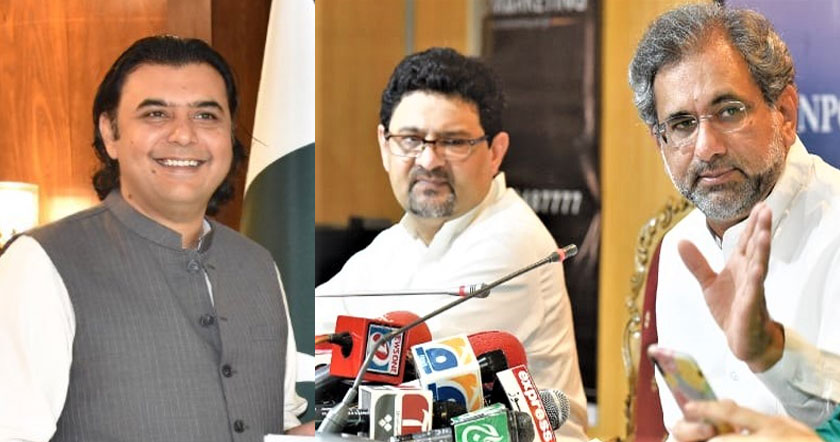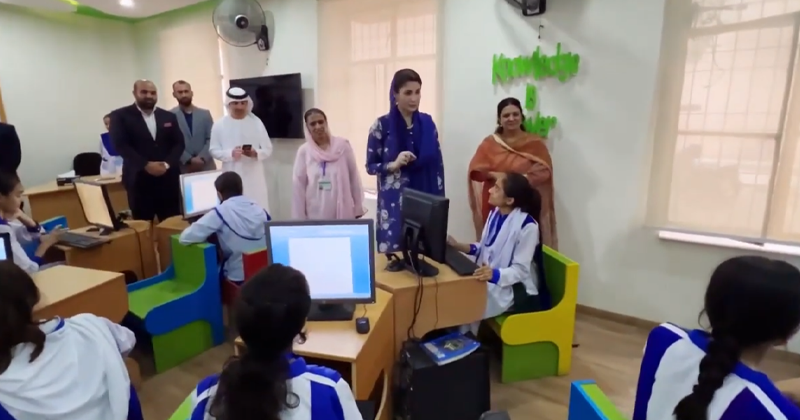Performance reports: Chitral ranks 6th in education, leaves girls behind

PESHAWAR: Even though Chitral stands sixth among 25 districts of Khyber-Pakhtunkhwa (K-P) and 47th out of 146 districts nationally, at least 37% of girls in the district are not going to school.
To provide context to the ranks given by Alif Ailan District Education Rankings 2014 or the government, a closer look at the top districts’ performance indicators reflecting where the districts fall on the scale is in the end just a number which cannot always paint a balanced picture.
School girls
A look at the top performing district according to Alif Ailan’s report, Malakand, reflects what being first or sixth really implies in terms of ground realities. In Malakand Division, at least 43% girls remain out of primary school, 81% out of middle school and a grand 95% out of high school.
Looking at the sixth best district for education, data on the K-P Elementary and Secondary Education department’s (ESE) website shows Chitral has yet to progress in terms of educating girls and continues to underperform in the sector.

According to ESE statistics, Chitral has 802 schools, out of which 477 are primary schools for boys and 167 for girls; 52 middle schools for boys and 36 for girls; 50 high schools for boys and 16 for girls and no higher secondary schools in the entire district for girls.
Enrolment
Net enrolment rate of children in primary schools is 56%. Around 63% boys and 48% girls attend school. In middle schools, the net enrolment rate is 31%; 34% of all boys and 28% of girls attend school.
However, it could be said in comparison Chitral is in a better situation than the rest; the district’s out-of-school children remain at 16% while K-P’s out-of-school rate stands at 28%.
According to the Alif Ailaan report, the percentage of girls who are not enrolled is lower in urban areas as compared to rural ones. In urban centres in the district, 10% girls remain out of school in comparison to 27% outside the cities. It added that most of the children in Chitral who are out of school are from a low-income background.
Talking to The Express Tribune, Khyber-Pakhtunkhwa Elementary and Secondary Education Deputy Director Abdul Shakoor Khan argued that the ratio of children enrolled in schools and the condition of these institutes is better in Chitral than other districts of the province. He said the elementary and secondary education department will treat all the districts equally.
Quality of teaching, schools
While the ESE data is more about hard numbers and statistics, Alif Ailaan also provides a qualitative look into Chitral’s state of education. As one example of how actual teaching translates into learning, the report states only 36% of children in grade five can read a story in Urdu and 58% can read one sentence in English.
In Chitral, for every 34 primary school students, there is one teacher; 30% of primary schools have only one teacher.
At least 69% of schools in Chitral remain without electricity and 40% without boundary walls. However, over 60% of schools have the privilege of water.
Published in The Express Tribune, December 30[SUP]th[/SUP], 2014.
Source

PESHAWAR: Even though Chitral stands sixth among 25 districts of Khyber-Pakhtunkhwa (K-P) and 47th out of 146 districts nationally, at least 37% of girls in the district are not going to school.
To provide context to the ranks given by Alif Ailan District Education Rankings 2014 or the government, a closer look at the top districts’ performance indicators reflecting where the districts fall on the scale is in the end just a number which cannot always paint a balanced picture.
School girls
A look at the top performing district according to Alif Ailan’s report, Malakand, reflects what being first or sixth really implies in terms of ground realities. In Malakand Division, at least 43% girls remain out of primary school, 81% out of middle school and a grand 95% out of high school.
Looking at the sixth best district for education, data on the K-P Elementary and Secondary Education department’s (ESE) website shows Chitral has yet to progress in terms of educating girls and continues to underperform in the sector.

According to ESE statistics, Chitral has 802 schools, out of which 477 are primary schools for boys and 167 for girls; 52 middle schools for boys and 36 for girls; 50 high schools for boys and 16 for girls and no higher secondary schools in the entire district for girls.
Enrolment
Net enrolment rate of children in primary schools is 56%. Around 63% boys and 48% girls attend school. In middle schools, the net enrolment rate is 31%; 34% of all boys and 28% of girls attend school.
However, it could be said in comparison Chitral is in a better situation than the rest; the district’s out-of-school children remain at 16% while K-P’s out-of-school rate stands at 28%.
According to the Alif Ailaan report, the percentage of girls who are not enrolled is lower in urban areas as compared to rural ones. In urban centres in the district, 10% girls remain out of school in comparison to 27% outside the cities. It added that most of the children in Chitral who are out of school are from a low-income background.
Talking to The Express Tribune, Khyber-Pakhtunkhwa Elementary and Secondary Education Deputy Director Abdul Shakoor Khan argued that the ratio of children enrolled in schools and the condition of these institutes is better in Chitral than other districts of the province. He said the elementary and secondary education department will treat all the districts equally.
Quality of teaching, schools
While the ESE data is more about hard numbers and statistics, Alif Ailaan also provides a qualitative look into Chitral’s state of education. As one example of how actual teaching translates into learning, the report states only 36% of children in grade five can read a story in Urdu and 58% can read one sentence in English.
In Chitral, for every 34 primary school students, there is one teacher; 30% of primary schools have only one teacher.
At least 69% of schools in Chitral remain without electricity and 40% without boundary walls. However, over 60% of schools have the privilege of water.
Published in The Express Tribune, December 30[SUP]th[/SUP], 2014.
Source







































